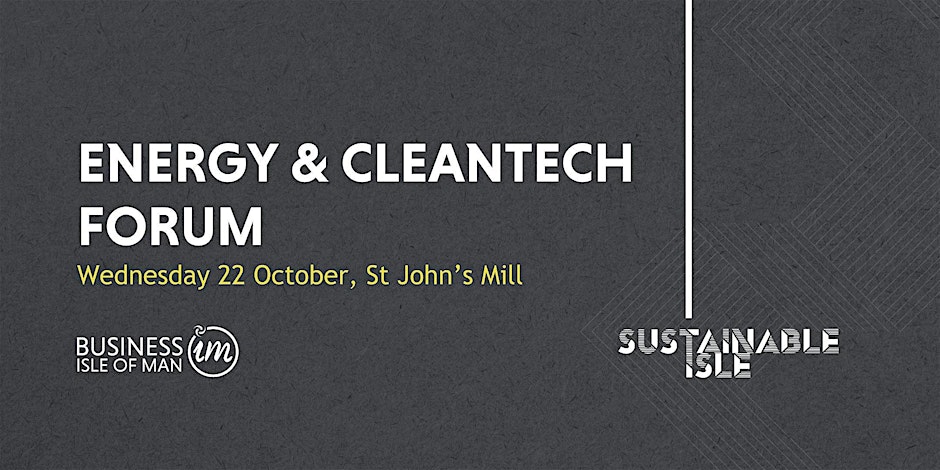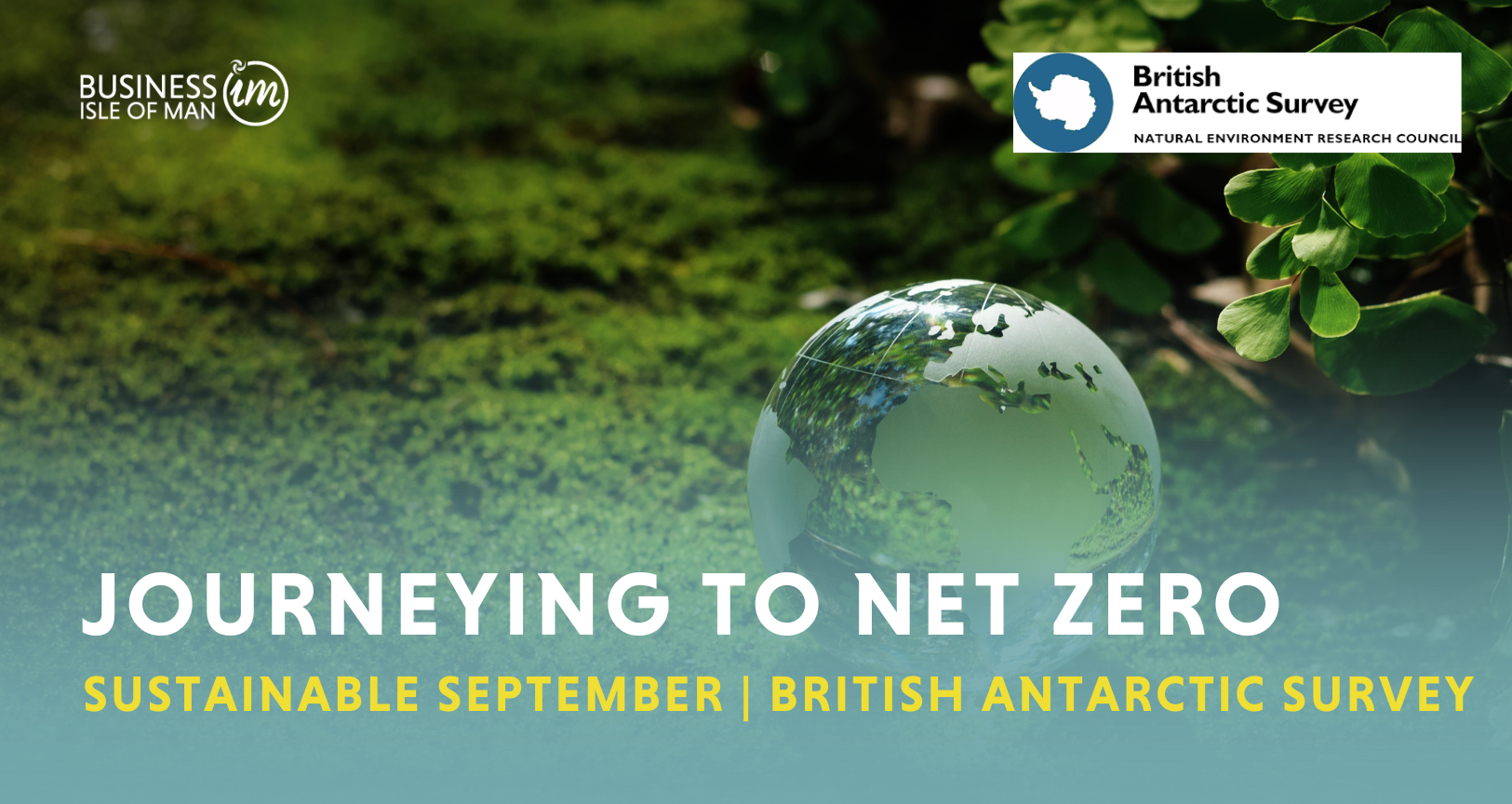SUSTAINABLE SEPTEMBER: THE SCHOOL HILL REDEVELOPMENT NET ZERO
05 September 2022

The School Hill redevelopment is an eco-sustainable building project undertaken by Savage + Chadwick Architects and NK Construction on behalf of Castletown Commissioners. The project employs more cutting-edge techniques that are more in line with the Island’s commitment to a net zero future.
This case study comes from NetZero.im
ENERGY CONSUMPTION FROM BUILDINGS
You’ve probably heard a lot about climate change and the immediate switches we can make at home to help fight this. But what about professional sectors, such as construction?
According to a 2019 report by the World Green Building Council, buildings and construction are responsible for 39% of carbon emissions globally, of which 28% are from energy consumption and 11% from construction materials. A building's energy consumption comes from its need to warm up and cool down the structure, specifically when the building hasn't been designed to be efficient in terms of insulation and ventilation.
ISLE OF MAN CARBON EMISSIONS FROM PROPERTIES
We burn fossil fuels to warm our houses, run our vehicles, and power our factories. By doing so, we release lots of carbon dioxide and other gases that are known to impact global warming. This is why renewable energy has become so important. In the Isle of Man, residential emissions make up 21% of net emissions related to home heating. The leading causes of greenhouse gas emissions in our homes include:
- Home heating
- We currently rely on fossil fuels such as gas and oil for our home heating, with a minimal number of homes presently using heat pump technology or other low carbon options.
- Using electricity to power lights and electrical appliances
- Most of this electricity is generated by burning gas and diesel.
- Building standards for new houses are continually improving.
- A recent survey of house conditions in the Isle of Man has revealed that 80% of the buildings in place in 2050 are already built, so adapting current properties and making them more energy efficient (such as double/triple glazed windows or doors or loft or wall insulation) is an essential part of cutting the emissions from our homes. See Renewable Heating Scenarios Report 2021.
PROJECT OVERVIEW
The redevelopment of the School Hill site in Castletown is an approved redevelopment plan that comprises:
- the demolition of 101 existing dwellings and 12 garages and
- the construction of 133 new homes sized in accordance with Castletown Town Commissioners' occupancy predictions based on their current tenants lists.
- These new homes will be a mixture of:
- two-bedroom apartments,
- two-, three-, and four-bedroom houses, and
- two-bedroom bungalows.
- These new homes will be a mixture of:
Of the 133 new units, 101 will be direct replacements for those which have been demolished, and the remaining 32 units will be a mix of first-time-buyer units and homes for sale on the open market.
Improved efficiency of the estate’s layout has allowed the architects (Savage + Chadwick Architects) and contractor (NK Construction) to increase the density of the development while adhering to open space requirements.
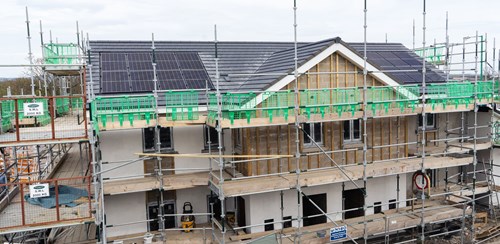
PROJECT CONSTRUCTION
The entire School Hill estate will be constructed to AECB Standard (Association for Environment Conscious Building - a network of individuals and companies that promote sustainable building); this is some way above the current Building Regulations requirements.
The heating to the homes will be electric for water and air source heat pumps for the provision of spatial heating. They work by transferring heat from the outside air to water, which heats your rooms via radiators or underfloor heating. It can also heat water stored in a hot water cylinder for your hot taps, showers, and baths. Heat from the air is absorbed into a fluid, and this fluid then passes through a heat exchanger into the heat pump, raising the temperature and transferring that heat to water. No fossil fuels will be brought onto the site for residential services use.
Each home will be provided with MVHR (Mechanical Ventilation with Heat Recovery) which draws heat from outgoing air and passes it to the air which is coming in: this is opposed to drawing stale air out and replacing it with fresh, resulting in a comfortable and condensation free environment all year round. Windows will be triple glazed.
PHASE 1
Phase 1, comprising 32 units, has already commenced and will be built using traditional house building materials.
There will be a couple of prototype homes built using timber frame systems, and these will be costed in detail and tested for thermal performance and carbon capture and will probably be virtually passive in performance. Locking carbon into the construction materials is an integral part of the equation, and this is the principal reason for using framing systems. If they are proven to be of the proper performance standard, the remainder of the site will probably be built using timber framing systems.
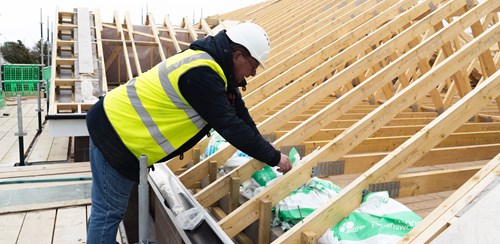
DEVELOPING A FULLY SUSTAINABLE PROJECT
An eight-year envisaged project, the redevelopment of the School Hill site was initially planned as a standard build project, but discussions between the Department of Infrastructure’s (DoI) local authority department toyed with the idea of this becoming an environmentally sustainable build.
A number of different options were discussed internally, and it was agreed that the Castletown Commissioners and DoI would look to complete AECB-style housing to embrace a more fully-sustainable design within the project.
AECB was chosen above other sustainable models of design and build due to the opportunity for on-Island contractors to upskill themselves to complete the work, rather than other sustainable build methods such as Beattie Passive which would require a workforce to be employed from off-Island.
Passivhaus (or Passive House) is an advanced low energy construction standard for buildings. Using high-performance insulation and making a building completely draught free effectively eliminates heat loss to create a building with minimal environmental impact. The majority of heating required comes from 'passive' sources such as sunlight, emitted heat from electrical appliances, and even body heat, meaning almost no traditional heating system is needed.
Each unit on the School Hill site will be insulated to a higher specification than is legally required, including full cavity fill, high thermal performance, and high sealant rates. This includes internal air source heat pumps (ASHP), which transfer heat absorbed from outside air to indoor spaces. These work via the wet central heating systems to heat radiators and provide domestic hot water. Each property will also be fitted with solar panels, which will provide hot water heating.
Whereas previous on-Island sustainable constructions have utilised some form of small, domestic gas boilers, one of the most significant construction decisions of the School Hill development is the absence of a gas supply to the estate.
While other developments have used economically sustainable construction on smaller on-Island projects, this is assumed to be the first fully AECB-constructed estate to be built in the Isle of Man that has effectively removed a gas supply from the estate.
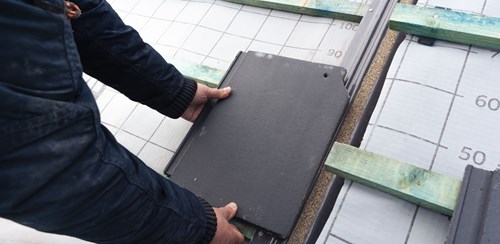
PROJECT FUTURE
While Phase 1 is currently underway, Castletown Commissioners and DOI are committed to all future phases of the development and are seeking funding and sign-off in order to progress phases 2 and 3.
Compared to the elemental constituents of steel and concrete, timber is a more sustainable and readily accessible building material, but given the Island’s geographical location, it is a more expensive option. Unless timber frames are manufactured on Island, the question is raised whether the embedded carbon lifecycle is an issue.
Concrete blocks are almost entirely manufactured on Island, so Castletown commissioners and DoI are looking to weigh up the pros and cons of importing timber from off-Island versus its long-term environmental effects in constructing the builds.
DEVELOPING LOCAL KNOWLEDGE AND SKILLS
Completing a fully AECB build on Island has allowed the constructors and architects to gain experience and knowledge of eco-construction, and it is hoped that this will make it easier going forward for other local authorities and companies to employ these methods in future construction projects, with two new projects currently in the early stages of eco-development.
All images are from NetZero.im or NK Construction Facebook
Want to learn more about the Isle of Man Climate Change Team? Read more here!
Do you have a sustainable project you want to show off this month? Get in touch!




